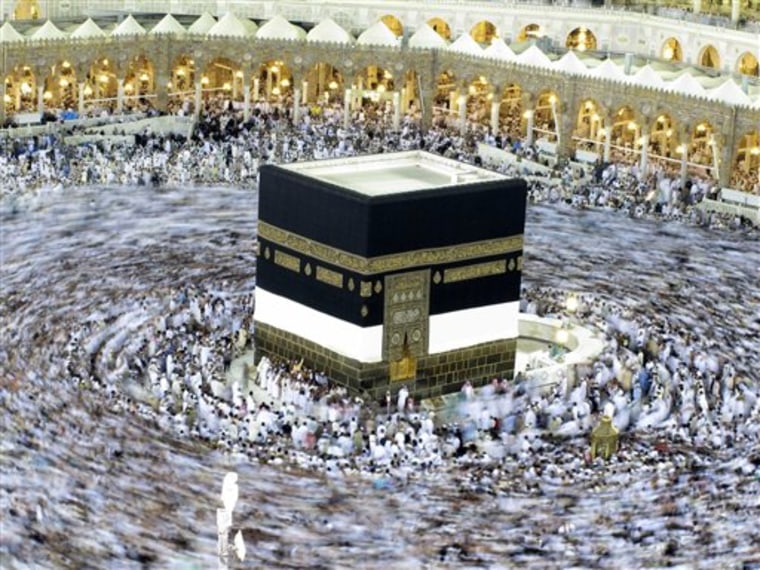Some Muslims beginning the annual hajj pilgrimage in Saudi Arabia on Sunday have a new way to avoid the crowds: an elevated light-rail that will whisk them between holy sites.
The four-day Islamic pilgrimage draws around 2.5 million worshippers each year, and the large numbers present authorities with a challenge in preventing stampedes at holy sites, fires in pilgrim encampments and the spread of disease.
Officials hope the new 11-mile (18-kilometer) train line, which is reserved for Saudis and citizens of other Gulf nations until it becomes fully operational next year, will alleviate crowding.
The first phase of the train project, called the Mecca Metro, will transport pilgrims between Mina, Arafat and Muzdalifa — three stops during the pilgrims' journey that trace the steps of the Prophet Muhammad and Abraham. Muslims believe Abraham built the ancient structure in Mecca's Grand Mosque known as the Kaaba.
The lime green cars zoom along an elevated rail, passing over the permanent white tents where hundreds of thousands of pilgrims spend the night on the way to the major sites. There are 12 trains now, each with a capacity of 3,000 people, said train operator Ahmed Hosny. It will begin a limited service Monday, operating at around 33 percent of its expected capacity.
The $2 billion train was constructed by a Chinese company. About 100 Egyptians have been brought in to help operate the train during this year's hajj because of their experience running Cairo's metro.
During the tests Sunday, a recorded message in Arabic and English warned passengers to "mind the gap," borrowing the much-loved phrase from London's metro, known as The Tube.
The new train will replace thousands of buses that shuttle pilgrims between the holy sites, reducing pollution as well as traffic congestion.
Faisal al-Sharif, a Mecca city council member and engineer, said the train is one of many development projects aiming to turn the holy city into a high-tech metropolis. Other projects include installing wireless connections and adhering to a green policy.
"It is a revolution. It is the first time in Mecca's history to have a train," al-Sharif said. "It will help make the hajj easier — no crowds and no more traffic and no more pollution."
The train doesn't stop at Mecca's holy sites, which include the holiest in Islam: the Kaaba and the Grand Mosque.
Besides crowding, authorities are also concerned about security.
On Thursday, Interior Minister Prince Nayef said security forces were on alert for any threats. An al-Qaida offshoot in neighboring Yemen has targeted senior Saudi officials and has claimed responsibility for the recent mail bomb plot.
When asked about the possibility of an al-Qaida attack, Nayef said, "We don't rule out any possibility of something that disturbs the security" of the pilgrims.
Al-Qaida in the Arabian Peninsula responded with an Internet statement Sunday saying it would never target pilgrims and accusing the Saudis of spreading lies.
"We assure our Muslim nation that we are against any criminal act against pilgrims," the statement said.
A fire broke out Sunday morning in the camp for pilgrims from Egypt, but caused no casualties or serious damage, said police Maj. Abdullah bin Thabet.
The kingdom has for years carried out development and construction projects to expand and improve the spaces used by millions of pilgrims from around the world to perform one of Islam's main pillars, required of every able-bodied Muslim once in their lifetime.
More than 2 million pilgrims had already arrived before the weekend, and Saudi officials say they expect a nearly 20 percent increase in the numbers this year compared to last year.
In terms of controlling the crowds, the most dangerous ritual takes place in Mina. There pilgrims carry out a symbolic stoning of the devil, pelting three walls representing Satan with pebbles.
In 2006, more than 360 pilgrims were killed when a piece of dropped luggage in a moving crowd caused a pile-up.
Since then, Saudi authorities expanded the giant ramp around the walls to five stories, spreading out the masses over different levels to prevent jams.
